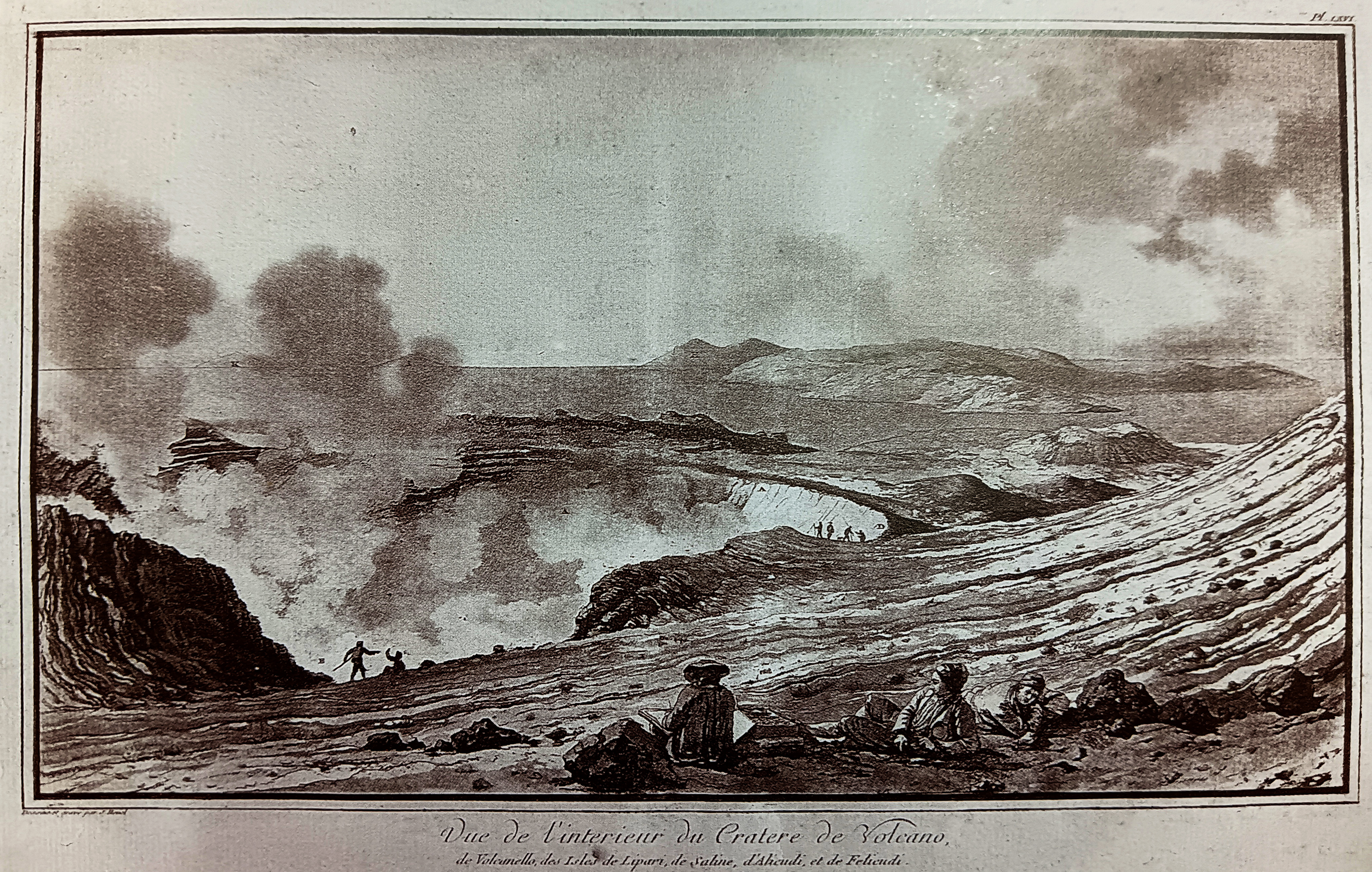PAST TALKS 2023
16 May 2023
DocTalks x MoMA
Nineteenth Century Ottoman Lighthouses:
ESRA NALBANT
Binghamton University, NY
Respondent: Sam Grinsell, UCL Bartlett
![]() Suez Canal entrance by H. Arnoux, Abdulhamid II collection
Suez Canal entrance by H. Arnoux, Abdulhamid II collection
Learning with the Volcanoes:
MARILENA MELA
Vrije Universitet Amsterdam
Respondent: Adam Jasper, ETH Zürich
![]() Houel, Jean. 1996 (1782). Viaggio Pittoresco Alle Isole Eolie. Translated by R. Cincotta. Pungitopo
Houel, Jean. 1996 (1782). Viaggio Pittoresco Alle Isole Eolie. Translated by R. Cincotta. Pungitopo
︎︎︎ back to Past Talks 2023
DocTalks x MoMA
Nineteenth Century Ottoman Lighthouses:
Making of a Coastal Landscape
ESRA NALBANT
Binghamton University, NY
Respondent: Sam Grinsell, UCL Bartlett
 Suez Canal entrance by H. Arnoux, Abdulhamid II collection
Suez Canal entrance by H. Arnoux, Abdulhamid II collection Between the late 1820s and the mid-1840s, maritime travel time had shrunk due to steamship technology, and the distance between coasts imploded. Due to this, the traffic over the oceans significantly intensified. A transformation on a such level required an infrastructural web of different types to support and facilitate this flow. Accordingly, to this process, the built environment of the shores changed radically, as the reflection of the intensifying maritime traffic manifested itself in the newly erected lighthouses, quays, and railroads connecting lands to ports. This work will discuss technological developments regarding steamships and lighthouses during the nineteenth century in the Ottoman realm with a specific focus on the career of Marius Michel. Lighthouse construction significantly increased as a global event since the need for navigational infrastructures to facilitate increased maritime traffic and provide links to connect oceanic highways to land. Marius Michel managed the lighthouse construction activities, first as the Director of the Ottoman Lighthouses Administration, then through the Michel et Collas company, which had the privilege of building and managing the lighthouses he founded. Lighthouses, as the concrete portion of the complex and multi-fragmented navigation operations, offer a fresh framework, which considers infrastructure construction in the Ottoman Empire for maritime transportation and trade during the nineteenth century on a global scale. This paper attempts to discuss technological developments regarding steamships and lighthouses in the Ottoman world together with the making of global connections during the nineteenth century. It aims to discuss the continuous position of oceans as space of maritime trade network and how that infrastructure network connects the land and sea during a transformative turn due to shifted material conditions and technological developments of the ninetieth century.
***
Learning with the Volcanoes:
Indigenous Cosmologies and Modern Epistemologies in the Aeolian Archipelago
MARILENA MELA
Vrije Universitet Amsterdam
Respondent: Adam Jasper, ETH Zürich
 Houel, Jean. 1996 (1782). Viaggio Pittoresco Alle Isole Eolie. Translated by R. Cincotta. Pungitopo
Houel, Jean. 1996 (1782). Viaggio Pittoresco Alle Isole Eolie. Translated by R. Cincotta. PungitopoThe volcanic Aeolian archipelago, off the North Coast of Sicily consists of seven inhabited islands. Throughout history, theses volcanoes have been approached as material resources, supernatural entities, and objects for protection. From a Braudelian perspective, human life in the islands has been shaped by volcanoes, in terms of subsistence activities, like mining, building, trade, agriculture, and tourism, but also narratives, traditions, and cultural attitudes. Interpretations brought from outside the islands interweave with beliefs born within. To this day, inhabitants of Stromboli personify the volcano, calling it Iddu- him. He is unpredictable: he brings fertility to the soil, but can cause death and damage. Homer referred to the islands as the headquarters of Aeolus; roman authors described them as the workshop of Hephaestus; and for medieval travelogues, their craters were the entrance to hell. The rationalization of environmental knowledge in the 19th century brought scientific attention from geologists and vulcanologists, leading ultimately to the nomination of the archipelago as a UNESCO natural world heritage site.
This presentation corresponds to one of the chapters of my dissertation, and is a work in progress. Drawing on travelogues, scientific papers, policy documents, landscape observation, and interviews, I discuss how modern and premodern epistemologies relate to contemporary issues of landscape governance, rights, and stewardship. In what ways (if at all) do indigenous cosmologies and situated knowledges about the landscape survive? What impact does the dominance of universal systems of thought (the recognition of the scientific value of the volcanoes, their aestheticization and their view as a world heritage property) have for local communities? Can we imagine a sustainable cohabitation of humans and non-humans, in the era of globalized neoliberalism and climate crisis, when the islands are peripheralized, their territory largely abandoned, and the livelihoods of islanders almost entirely dependent on tourism? This talk will touch upon episodes of interaction between humans and the volcanoes and will seek to understand their impact for present and future landscape making.
This presentation corresponds to one of the chapters of my dissertation, and is a work in progress. Drawing on travelogues, scientific papers, policy documents, landscape observation, and interviews, I discuss how modern and premodern epistemologies relate to contemporary issues of landscape governance, rights, and stewardship. In what ways (if at all) do indigenous cosmologies and situated knowledges about the landscape survive? What impact does the dominance of universal systems of thought (the recognition of the scientific value of the volcanoes, their aestheticization and their view as a world heritage property) have for local communities? Can we imagine a sustainable cohabitation of humans and non-humans, in the era of globalized neoliberalism and climate crisis, when the islands are peripheralized, their territory largely abandoned, and the livelihoods of islanders almost entirely dependent on tourism? This talk will touch upon episodes of interaction between humans and the volcanoes and will seek to understand their impact for present and future landscape making.